Florence Knoll Lounge Seating
Designed by Florence Knoll, 1954
Warmed through colour and texture, the Florence Knoll Lounge Collection is a scaled-down translation of the rhythm and proportions of mid-century modern architecture.
Share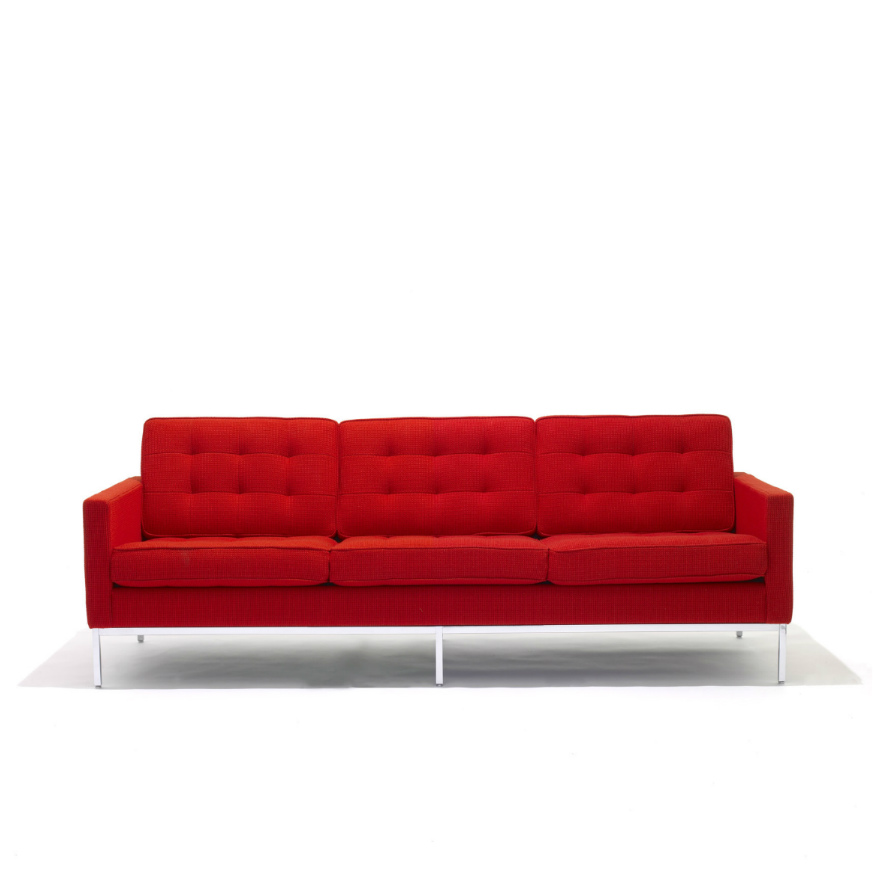
Warmed through colour and texture, the Florence Knoll Lounge Collection is a scaled-down translation of the rhythm and proportions of mid-century modern architecture.
Share

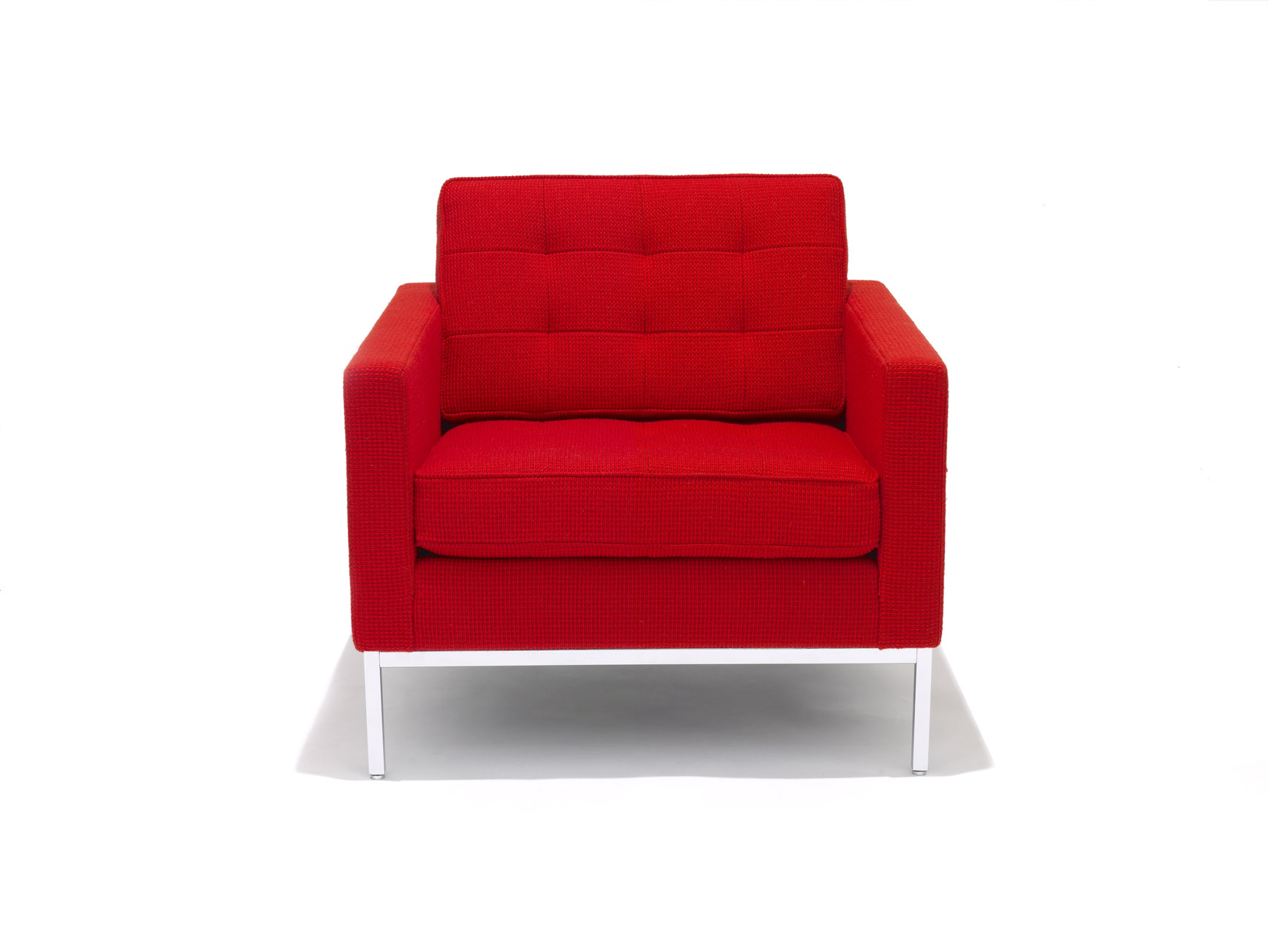
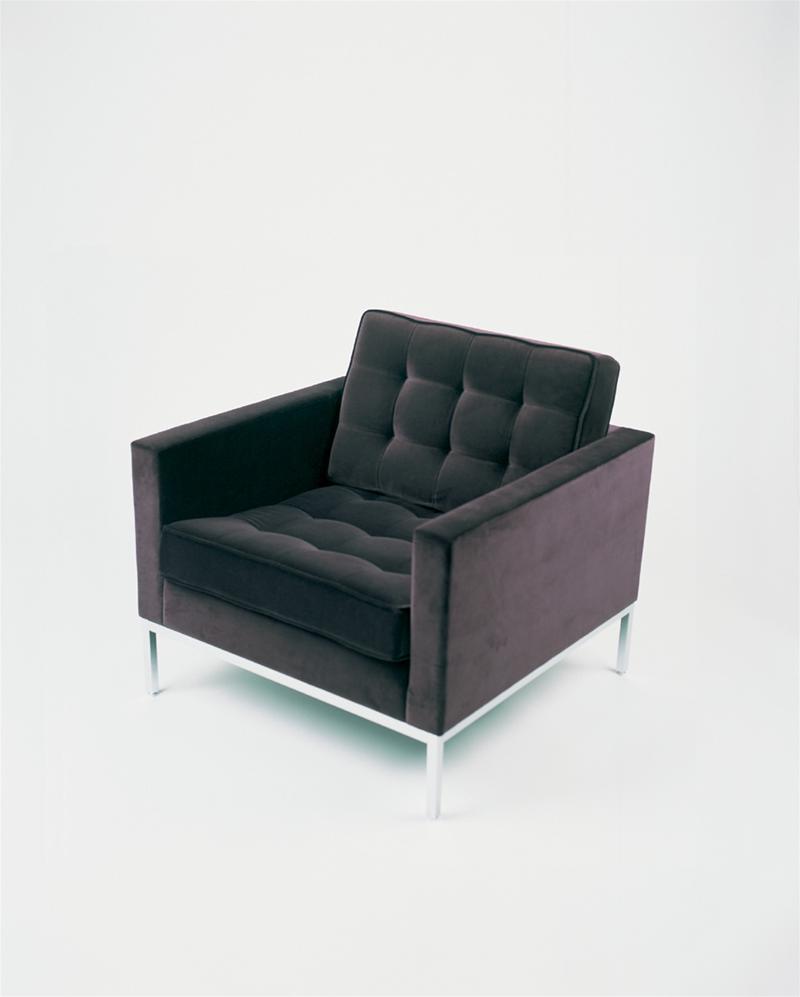
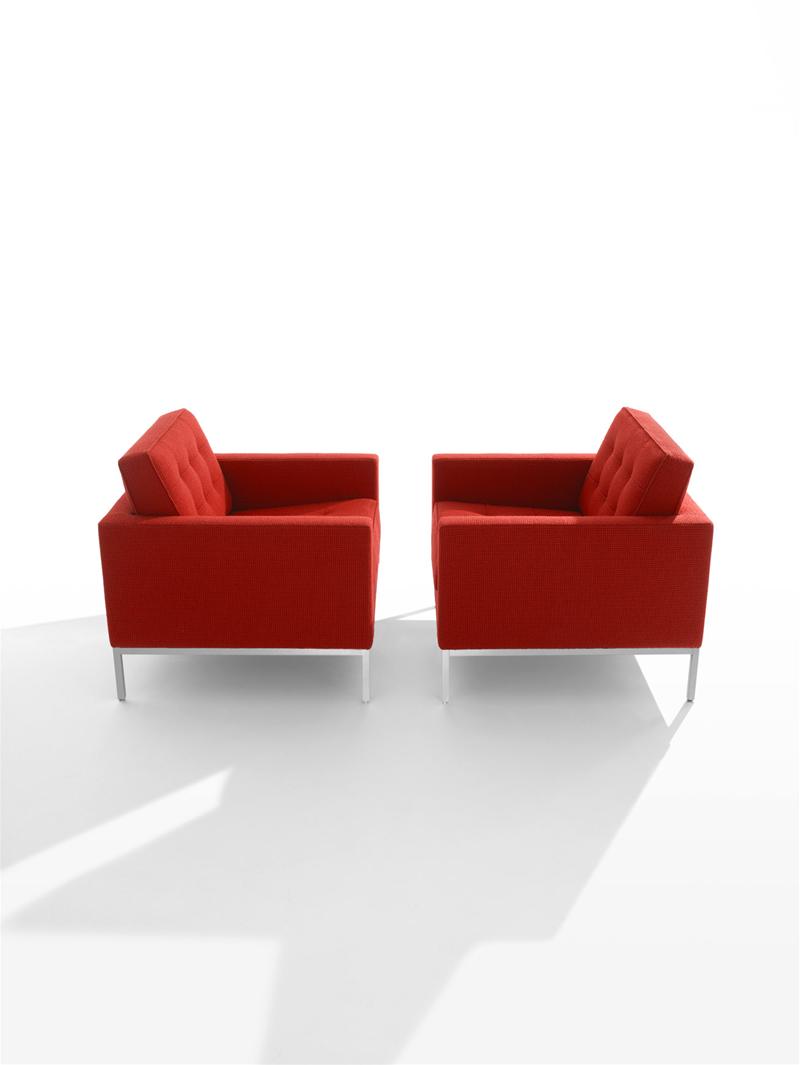
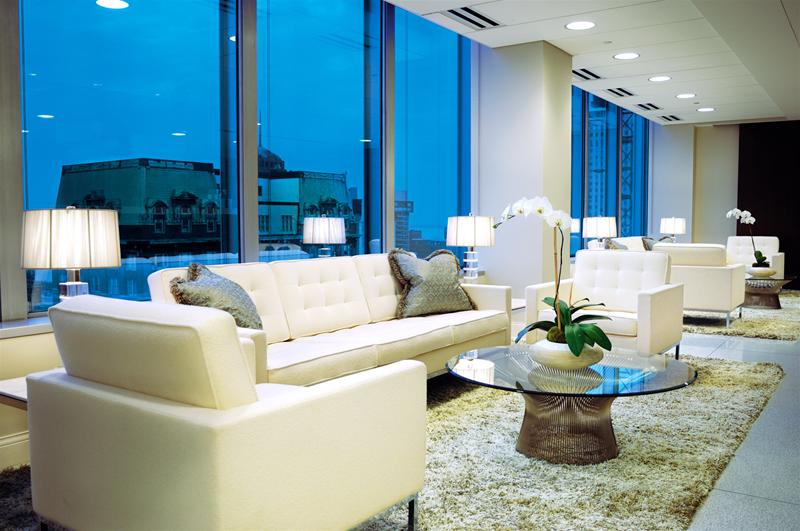
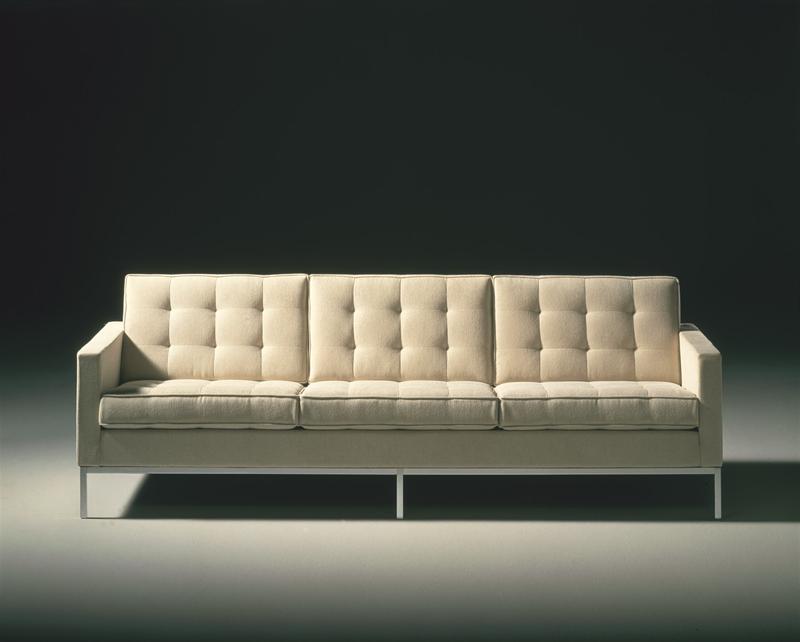
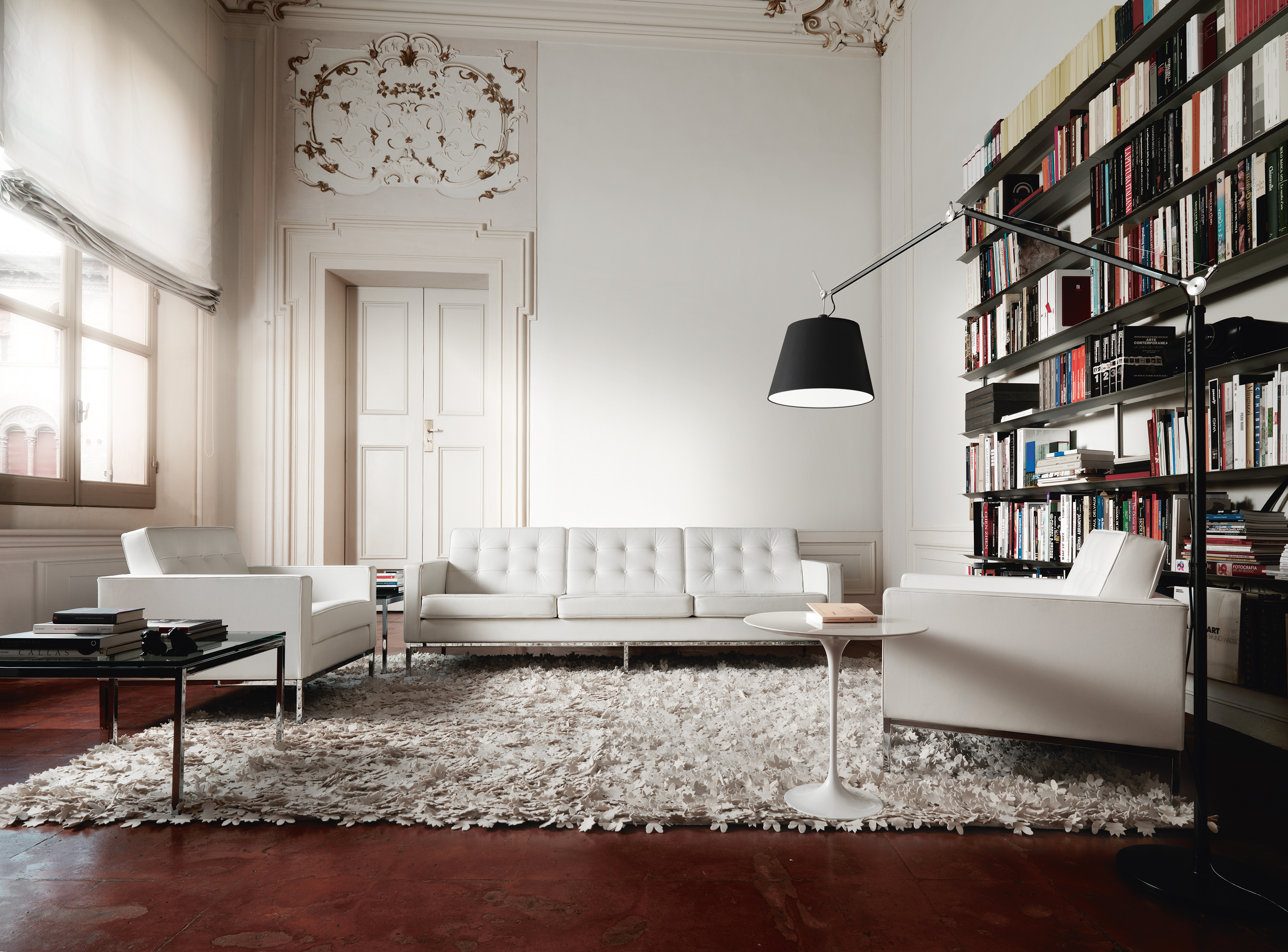
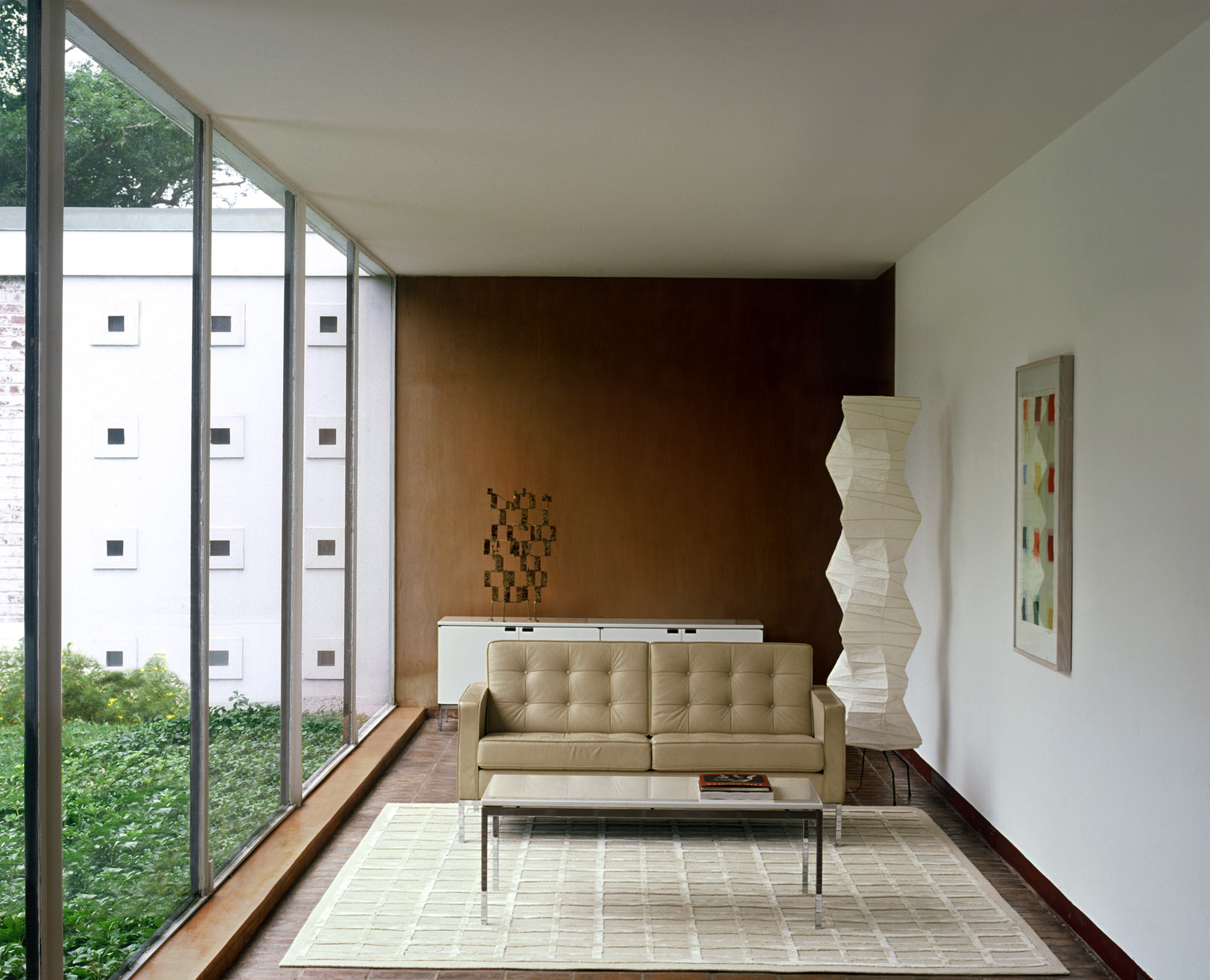
This versatile collection includes a lounge chair, sofa, two-seater bench and three-seater bench.
The KnollStudio logo and Florence Knoll's signature are stamped into base of each frame, to guarantee authenticity.
Exposed metal frame and legs constructed of heavy gauge tubular steel.
Arm, seat and back cushions are variable density foam welted and button tufted.
Pieces upholstered in leather have matching buttons; pieces upholstered in fabric do not have buttons.
Metal frame finish available in either polished chrome or satin chrome.
Upholstery available in a range of fabric or Spinneybeck leather. This product is available with foam that meets requirements for BS5852.
Armchair
81cm W x 82cm D x 80cm H with seat height of 43cm.
2 seat sofa
159cm W x 82cm D x 80cm H with seat height of 43cm.
3 seat sofa
230cm W x 82cm D x 80cm H with seat height of 43cm.
Two seat bench
92cm W x 50cm D x 42cm seat height.
Three seat bench
154cm W x 50cm D x 42 cm seat height.
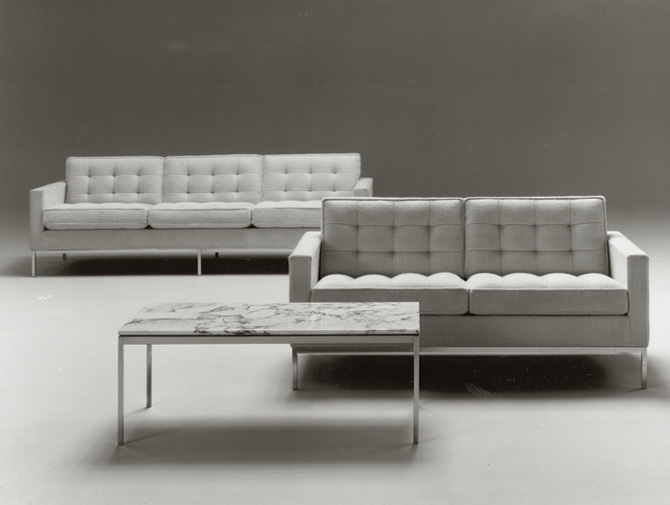
As head of the Knoll Planning unit, Florence Knoll always approached furniture design with the larger space in mind. Most important to her was how a piece fit into the greater design — the room, the floor, the building. Every element of a Knoll-planned space supported the overall design and complemented the existing architecture. Never one to compromise, Florence would often design furniture when she, “needed the piece of furniture for a job and it wasn’t there.” And while she never regarded herself as a furniture designer, her quest for harmony of space and consistency of design led her to design several of Knoll’s most iconic pieces—all simple, none plain. As skyscrapers rose up across America during the post-war boom, Florence Knoll saw it as her job to translate the vocabulary and rationale of the modern exterior to the interior space of the corporate office. Thus, unlike Saarinen and Bertoia, her designs were architectural in foundation, not sculptural. She scaled down the rhythm and details of modern architecture while humanising them through color and texture. Her lounge collection, designed in 1954, is a perfect example of her restrained, geometric approach to furniture, clearly derived from her favourite mentor, Mies van der Rohe.
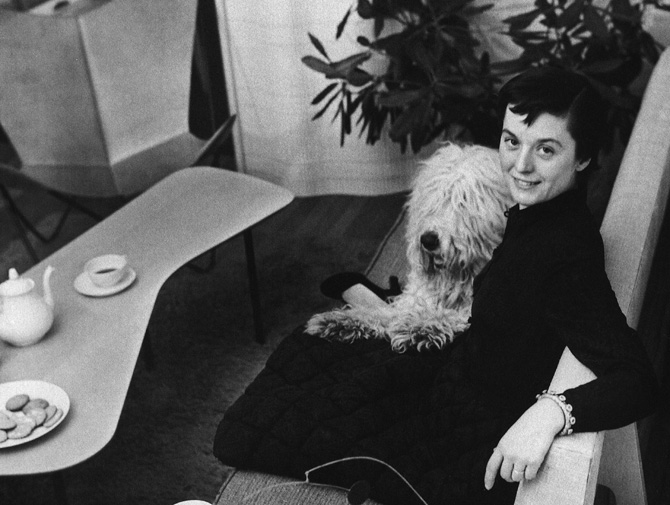
While a student at the Kingswood School on the campus of the Cranbrook Academy of Art in Bloomfield Hills, Michigan, Florence Knoll Bassett (née Schust) became a protegée of Eero Saarinen. She studied architecture at Cranbrook, the Architectural Association in London and the Armour Institute (Illinois Institute of Technology in Chicago). She worked briefly for Walter Gropius, Marcel Breuer and Wallace K. Harrison. In 1946, she became a full business and design partner and married Hans Knoll, after which they formed Knoll Associates. She was at once a champion of world-class architects and designers and an exceptional architect in her own right. As a pioneer of the Knoll Planning Unit, she revolutionised interior space planning. Her belief in "total design" – embracing architecture, manufacturing, interior design, textiles, graphics, advertising and presentation – and her application of design principles in solving space problems were radical departures from the standard practice in the 1950s, but were quickly adopted and remain widely used today. For her extraordinary contributions to architecture and design, Florence Knoll was accorded the National Endowment for the Arts' prestigious 2002 National Medal of Arts.